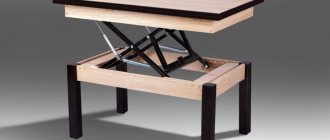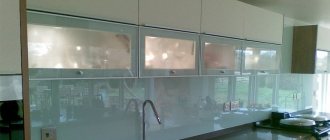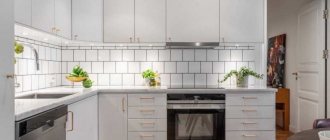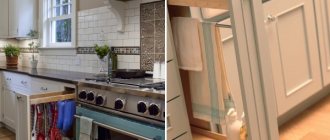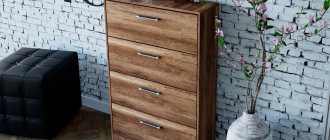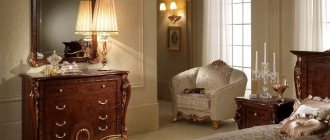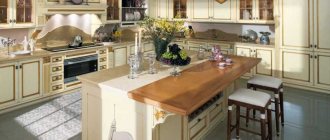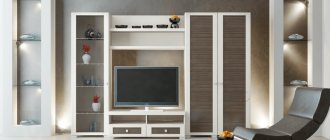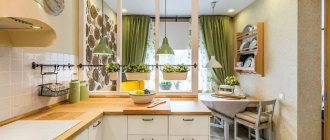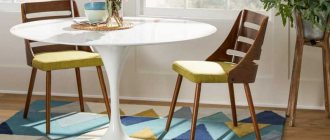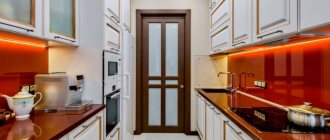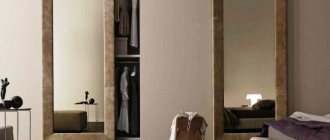A well-equipped kitchen is not only a skillfully constructed work triangle and an optimal amount of storage space. This is the space that serves as the background when we prepare delicious dinners, have breakfast or enjoy a glass of red wine.
In addition to aesthetics, it is worth considering several other issues related to, among other things, what material the fronts of a modern kitchen unit . Exposed to many harmful factors, they must have high strength and durability.
Constant opening and closing, stains and discoloration, humidity and frequent contact with water, mechanical damage and very intensive use are just some of the factors that kitchen furniture faces. Today, the most popular finishes are wood, MDF and plywood, imitation stone, concrete and even steel, matte or glossy finish. Solutions with decorative frames, milling and classic recesses.
The aesthetics of kitchen design, however, are determined by the fronts of the kitchen unit, so more attention is paid to it, and there is a greater variety of performance materials, which allows you to decide what your dream kitchen and whether it will serve its purpose.
Kitchen furniture facades - interesting features of the most popular materials
Modern facades of kitchen furniture are varied, their characteristics are both positive and negative. The facade is the “front” of the kitchen; it carries the main design task, creating a certain style and general atmosphere of the room.
Kitchen frames
Kitchen cabinets purchased without fronts open up enormous scope for creativity; with their help you can create any set. Kitchen frames are functional, easy to dismantle and transport to a new location.
If you wish, you can always buy kitchen facades separately, in accordance with your desires and capabilities.
Requirements for kitchen facades
Kitchen units will have to be used in conditions of temperature and humidity changes. Drops of water and grease will fall on the facades, cabinet doors will often open, so all kinds of damage are possible.
The material used for the kitchen facade determines its service life, quality, appearance and price.
In general terms, facades should be:
- Moisture resistant;
- Easy to care for;
- Resistant to high temperatures;
- Durable;
- Resistant to various damages.
If damaged, or there is a desire to update the appearance, you can replace the kitchen facades.
Wooden fronts for kitchen furniture
Wood, as a material, is durable and timeless, making it a popular choice to complete and furnish any interior, including the kitchen. Wood kitchen cabinet fronts can be sleek, ultra-modern panels or styled with a rustic, Provençal or English design. Very often they are only part of the door in the stone or brick structure of lower kitchen cabinets. Country style kitchens use this combination of materials. The advantage of kitchen furniture with wooden fronts is their:
- durability;
- prestigious appearance;
- relatively easy care.
Advice! Additionally, if after many years you are tired of the color of your wood kitchen cabinets, you can remove the top coat of paint or varnish and repaint the fronts in your chosen color.
Wooden facades for kitchen furniture always bring a warm and cozy atmosphere to the interior:
- grained wood is a timeless eco choice;
- The simple, smooth shape of wooden cabinets (no carvings or recesses) is a model that will never go out of style.
MDF
The most common are MDF facades for kitchens. Being relatively cheap, this material outperforms solid wood. It is stronger, denser, and more easily withstands changes in temperature and humidity.
- MDF facades covered with PVC film. The material, which is fairly cheap and of good quality, is the most in demand. MDF boards are covered with film, which has a large selection of various colors and textures, using a vacuum press. Unfortunately, PVC film cannot completely “disguise” itself as wood. Often the film peels off from the MDF base, especially under the influence of temperature changes above the stove.
- MDF + HPL plastic facades. A modern material that is increasingly in demand. Possessing greater resistance to damage and temperature than PVC film, it has an expensive appearance. And it is inferior only in the number of textures and color palette. The disadvantages include the inability to apply milling to the façade. The need to use an aluminum edge or edging for gluing the ends.
- Painted facades. In those days when modern materials did not exist, painting kitchen facades was considered a good solution. This technology is still used today. Now painting is carried out automatically and semi-automatically. The main two types of painted facades are matte and glossy. The main advantage of painting kitchen facades is the ability to easily choose any color. Painted facades are resistant to temperature, because there is simply nothing to peel off; it is possible to create various shapes, apply milling or design. Painted facades are easy to clean. Odors and moisture are not absorbed into them. But there are also disadvantages here. Higher price, touch marks remaining on the surface, paint fades from sunlight, impacts can leave chips.
- MDF kitchens with UV varnish. Difficult to produce slabs with a smooth, super-glossy surface are produced in specialized factories. Furniture is made from ready-made slabs. Therefore, facades come only in flat geometry.
- Frame facades. Glass, plastic or chipboard are inserted into a profile made of MDF. Such facades expand the designer’s capabilities, allow you to combine several materials and, without increasing the price, produce non-standard sizes of facades; you can easily insert glass or a mirror into the profile.
At the same time, such facades have low wear resistance. The film quite often peels off from the base, and the frames may be loosely secured. The filling of facades may not tolerate moisture well.
Which material should you prefer?
Currently, kitchen furniture manufacturers produce a wide range of facades.
You need to take their choice very seriously, because the front part of the furniture is the face of your kitchen.
For people who want to save money, chipboard front panels are a good solution.
This allows you to achieve good quality at an affordable price.
To understand which facades to choose for the kitchen, you first need to decide on their material.
For the production of kitchen facades the following are most often used:
The most common material for front panels is chipboard.
Currently, furniture makers use chipboard, which has good density and moisture resistance, which makes it possible to use it in conditions of high humidity.
Making kitchen facades from MDF is a modern and practical solution.
It is made from shavings and dust, which are glued together using urea resins.
The special technology used in the manufacture of MDF provides higher density characteristics and resistance to deformation.
Kitchen facades made of solid wood are very high quality, but expensive today.
Before using wood for furniture production, it is treated with an antiseptic.
- Cocoon chairs
- Double-wall corrugated pipes
- Road rollers
This provides reliable protection against temperature changes and humidity.
Read here! Design for a modern kitchen: design and selection rules (100+ best examples)
Plastic kitchen facades look very modern and are very popular among buyers today.
Plastic allows us to produce original furniture of various textures and colors.
Front panels for kitchen furniture can also be made of veneer, metal and other materials.
Laminated chipboard facades
This is one of the most inexpensive and common facade options. Their low cost allows you to choose any decor and style.
The material does not tolerate moisture very well. Water causes the slabs to swell and become deformed. Laminated chipboard facades are heavy, which creates an increased load on the fittings. To protect against water, the facades are covered with a steel or aluminum profile.
Dimensions for different types of furniture
Despite the rapidly growing popularity of furniture of non-standard shapes, most manufacturers focus on traditional models. This is at least economically beneficial. The demand for conventional rectangular, cabinet cabinets and walls has always been high. There are quite a lot of options for standard sizes of furniture facades, so you can choose a suitable element for rooms of any size.
Updating the interior with recessed furniture lamps
| Blind doors, in cm | Showcases, cm | Drawers and cabinets, cm |
| 39.5 x 49.5 | 49.5 x 49.5 | 14 x 29.5 |
| 57 x 29.5 | 57 x 29.5 | 14 x 39.5 |
| 71.5 x 29.5 | 71.5 x 29.5 | 28.5 x 39.5 |
| 71.5 x 59.5 | 90 x 29.5 | 11 x 59.5 |
The indicated dimensions are relevant for facades made of all types of materials. Compliance with them guarantees convenient use of furniture. But it is worth noting that the data may differ slightly from different manufacturers, by 3–5 mm.
As for sliding wardrobes, the width of the doors can vary from 50 cm to 1 m, and the height can range from 220 to 240 cm. Each manufacturer sets its own parameters for facades.
Facade shape
The shape of the façade has a huge impact on visual perception. There are quite a lot of options:
- Smooth. A façade that is elongated in height serves as a vertical, or horizontal if it is elongated in width. Thanks to this, you can visually raise the ceiling or make the room wider. Even among modern interiors of kitchen facades, it remains the most popular.
- Paneled. It is quite suitable for a classic or wooden kitchen. In order to look decent, it requires expensive materials in production.
- Radial. Having appeared relatively recently, it has found its fans not only among connoisseurs of the classics, but also among those who prefer the most modern solutions. Smooth curved lines give the furniture a safe and comfortable look. Allows you to create curves in the kitchen that are convenient for work.
- Frame. A filler is inserted into a wooden, aluminum or MDF frame. Such combinations are popular in modern facades. Thanks to this, the price can be reduced. You can use material that imitates stone or leather, and glazing is used in many styles of kitchen facades.
Popular color solutions for facades
The variety of colors directly depends on the chosen material for the manufacture of the facade. Some types have a minimal assortment, while in other options, for example, in MDF, there are practically no restrictions.
The fashion for color solutions is changeable and is different for each time. To a large extent, it all depends on the mood and desire of the customer.
General view of the room
When creating a unified interior, not only the decoration of the walls is very important, but also the furniture that is in the room. This condition is also mandatory when decorating a kitchen. When choosing a facade, it is necessary to focus not only on external indicators, but also on the functionality and durability of the material used. It is very important to find the best combination of practicality, reliability and, of course, beauty.
Basic façade styles
Based on the area and proportion of the existing kitchen, a general concept is developed. The right choice of style will make the kitchen cozy and attractive. The choice of color for kitchen facades and their shape depends on it.
A white kitchen remains the desire of many housewives. Modern white comes in many shades. In a kitchen with white facades, you first need to choose whether they will be matte or glossy.
Touch marks remain on the gloss, but it is easier to remove. The main disadvantage of a white kitchen is impracticality. A lot of effort will be required to remove it. Today, there is a large selection of different styles with a varied palette from which to choose.
- Classic. Consists of clear, elegant outlines, symmetrical shapes. It involves the use of wood or its imitation, with smooth color transitions depending on personal taste.
- Baroque and Empire. Strict lines with discreet luxury and grandeur. Predominance is given to warm colors. Light wood varieties are used, or the surface is painted white, red shades can be used.
- Country style. Combines straightness and smoothness. Natural shades of the palette are used. Wood or MDF enamel is painted white with an aging effect.
- Techno. Preference is given to plastic. The shapes and outlines are regular and straight. Imitation of dark wood is used in combination with facades of “metallic” tones. The color palette is bright and brilliant.
- Modern. Smooth lines and unity of stylistic elements. Acrylic or enamel-painted facades are well suited here. In one headset you can combine white with three others. There may be a drawing or photo printing on the facades.
- Art Deco. This style is an example of luxury. Smooth wooden facades are combined with patterned plastic panels. Gold, silver, bronze and platinum are the main color options. A white palette is also used and, for contrast, black and graphite shades.
- High tech. Absolutely smooth facades of a strict design with clear geometric lines are suitable for this style. Involves the use of high-tech materials.
- Loft. Industrial style involves simple, concise solutions, with virtually no limits on the designer’s imagination. Facades are used both with fittings and with smooth surfaces. In most cases, matte surfaces are used, but glossy ones can also be used. Stainless steel facades will fit perfectly here. The color solutions offered by designers are usually neutral.
- Fusion The main thing here is a single composition. Otherwise, you can combine any styles and colors with each other. Preference is given to smooth transitions and round outlines.
Design and color options
The facade of any product without appropriate decor will not have a finished look. The rule does not apply here: the more, the better. Finished furniture should be decorated in accordance with the design of the room where it will be installed.
Modern style
The interiors of modern apartments and houses often feature unusual design solutions. Almost any idea can be brought to life using the following techniques:
- Lamination is the application of a special film to chipboard and MDF.
- Gloss - created by using plastic, acrylic, varnish, film.
- Imitation of textures - with the help of a special coating, chipboard or MDF can be turned into wood, stone, leather.
- Spraying for glass serves not only as a decorative element, but also protects from the sun.
- Printing on facades allows you to decorate furniture with any images, even photographs.
Today, furniture facades with prints such as flowers, cityscapes, and corrugated photo printing are popular.
A combination of facades is successfully used. Bamboo inserts can complement an interior with an emphasis on natural materials. Mirror surfaces add lightness, increase space, and forged fragments provide a unique style and feeling of luxury.
Features of furniture facades made of MDF, algorithm for updating the coating
Glossy facades reflect light well and are combined with any colors, which cannot be said about other types of decor. All interior elements should be designed in the same range or in a variety of shades that are in good harmony with each other. There are no standard or generally accepted solutions. Kitchen facades can be white, red, black. The same goes for cabinets, chests of drawers and other furniture.
Lamination
Gloss
Imitation of textures
Sputtering for glass
Seal
Classic
Classic requires greater restraint in colors and decor. This style can be used:
- Panels - represent the framing of one or several parts of the facades.
- Braids are made from plastic or carved from wood.
- Patina is the effect of aging.
In a classic style, it is not necessary to use natural wood. The facades can be made from budget chipboard, but lined with veneer. Another option is to use decor with the structure of noble wood. Film, plastic and even photo printing are suitable for this. Although it is very difficult to achieve realism with a pattern on the facade that imitates wood. Current colors: white, pastel colors, calm rich blue, green.
Panels
Braids
Patina
Sizing
When planning to purchase a kitchen set, you need to decide on the size of the kitchen facades. They can be either standard or non-standard.
The non-standard size allows you to optimize the kitchen and implement non-standard solutions. But, at the same time, the price will increase significantly and the production time will increase.
Standard sizes are cheaper, it is easier to make a project for them and select components. Accordingly, it is easier and more profitable to use standard front sizes, but if necessary, order several non-standard products.
Tips for choosing based on purpose
When selecting furniture fronts, you need to calculate all the pros and cons. It is necessary to pay attention to the following points:
- The level of resistance of the material to high moisture and temperature changes.
- Durability and susceptibility to mechanical damage.
- Difficulty level of care.
- Estimated service life.
It is necessary to take into account both practical and aesthetic components. Glass facades in the hallway, for example, are inappropriate, because clothes will be stored behind them, the silhouette of which will not at all decorate the interior of the room.
Furniture blinds are best used in the kitchen to provide ventilation in the closet. It is not recommended to install wooden shelves and cabinets in the bathroom. Due to excessive exposure to moisture, they quickly become deformed, which will require a radical replacement of furniture. Chipboard is not acceptable for children's use due to the low level of safety. Taking into account the key features of each material, you can choose the ideal facade for any type of furniture.
The level of resistance of the material to high moisture and temperature changes
Durability and susceptibility to mechanical damage
Difficulty of care
Approximate service life
Facades from the IKEA catalog
There are many domestic and foreign companies engaged in the production of furniture on the Russian market. One of the world-famous brands that produces the best kitchen fronts is IKEA.
Its products are aimed at the general consumer and are reasonably priced. IKEA facades are produced using frameless technology. All sizes are standardized. Made from chipboard, MDF, wood.
